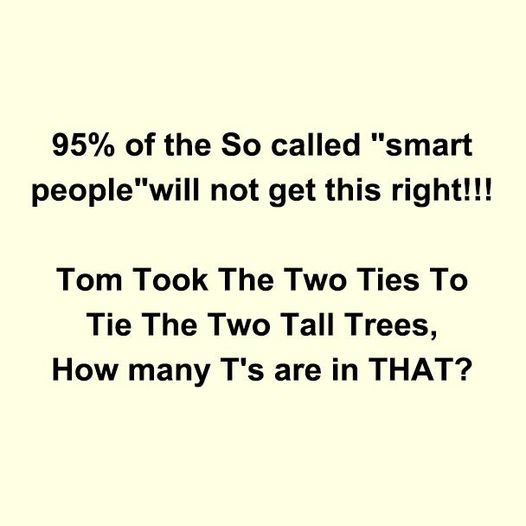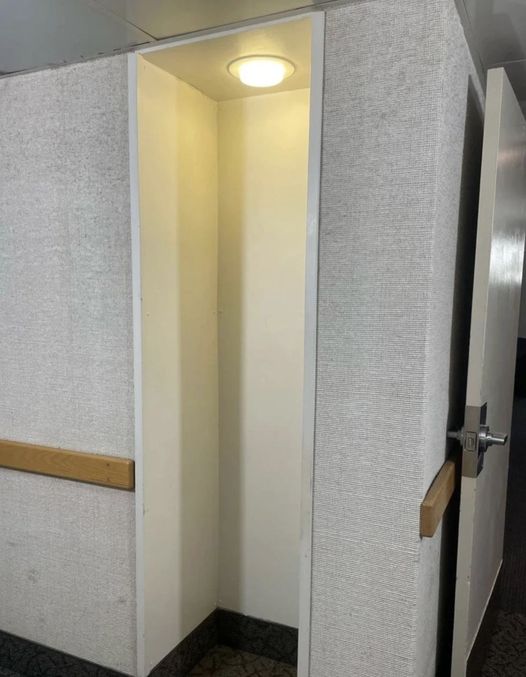We live in an age where intelligence is often measured by how quickly and accurately one can solve complex problems, understand abstract concepts, or decipher tricky riddles. But what if I told you that a simple brain teaser could trip up even the most brilliant minds? Yes, you heard that right! A significant percentage—around 95%—of so-called “smart people” won’t get this riddle correct. Are you ready to test your wits?

Here’s the challenge:
Tom Took The Two Ties To Tie The Two Tall Trees,
How many T’s are in THAT?
At first glance, this riddle seems straightforward. Most people, especially those who pride themselves on their intelligence, immediately jump to what they believe is the obvious answer. They count the T’s in the entire sentence: “Tom Took The Two Ties To Tie The Two Tall Trees” and confidently announce their tally. But here’s the catch—this riddle is designed to trip you up.
Let’s walk through the thought process that often leads people astray.
The Trap of Overthinking
The sentence itself is a distraction. When faced with a problem, our brains are wired to gather all the information and work through it logically. In this case, the sentence is filled with T’s. The initial instinct for many is to count every single T in the sentence. Here’s what that process might look like:
- Tom has one T.
- Took has one T.
- The has one T.
- Two has one T.
- Ties has one T.
- To has one T.
- Tie has one T.
- The has one T.
- Two has one T.
- Tall has one T.
- Trees has one T.
If you’re following along and counting as you read, you might arrive at a total of 11 T’s in the sentence. Confidently, you might then declare, “There are 11 T’s!” But that’s where you fall into the trap.
The Power of Simplicity
The key to solving this riddle isn’t in overanalyzing or counting every T in the sentence. The trick lies in paying attention to the exact wording of the question: “How many T’s are in THAT?”
Notice the word “THAT” is capitalized and singled out, but in the rush to solve the riddle, many overlook its significance. The question isn’t asking about the number of T’s in the entire sentence. It’s asking about how many T’s are in the word “THAT.”
When you focus on the word “THAT,” the answer becomes crystal clear. How many T’s are in the word “THAT”? There are two. One at the beginning and one at the end of the word.
Why Do So Many Smart People Miss This?
The reason this riddle trips up so many intelligent individuals is because it preys on a common cognitive bias: the tendency to overthink. Smart people are often trained to analyze problems deeply and consider all possible angles. This skill is invaluable in many situations, but in this case, it works against them.
The riddle is a test of attention to detail and simplicity, not of complex problem-solving. It’s a reminder that sometimes, the simplest answer is the correct one, and that clarity of thought can be more valuable than over-analysis.
The Lesson Behind the Riddle
Beyond just being a fun brain teaser, this riddle teaches an important lesson: always pay attention to exactly what’s being asked. In many aspects of life, whether in problem-solving, decision-making, or communication, the ability to focus on the key details and avoid unnecessary complications can lead to better outcomes.
This riddle also highlights the importance of slowing down. In our fast-paced world, it’s easy to rush through tasks, skimming over details in the process. But as this challenge demonstrates, sometimes all it takes to find the right answer is a moment of pause and reflection.





